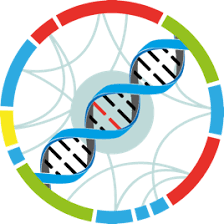Study : Transcriptional and metabolomic analyses implicate cell wall changes are associated with drought tolerance in Brachypodium distachyon.
Identification
Name
Transcriptional and metabolomic analyses implicate cell wall changes are associated with drought tolerance in Brachypodium distachyon.
Identifier
dXJuOkVWQS9zdHVkeS9QUkpOQTUyNDEwNg==
Description
Brachypodium distachyon as an annual species that colonises broken ground is a highly appropriate model to define drought tolerance mechanisms. We have previously identified accessions exhibiting drought tolerance, high susceptibility and intermediate tolerance to drought; respectively, ABR8, KOZ1 and ABR4, from a screen of 138 genotypes. To define the mechanisms of tolerance, the responses to drought were assessed using transcriptomic and metabolomic approaches. Analysis of RNA-seq before and following drought suggested relatively few differentially expressed genes in ABR8. Linking these to gene ontology (GO) terms revealed an enrichment for biological processes related to “regulated stress response”, “plant cell wall” and “oxidative stress”. Interestingly, drought tolerance also appeared to correlate with pre-existing differences in gene expression linked to GO terms associated with the cell wall. These included glycoside hydrolases involved in cell wall remodelling, pectin methylesterases, expansins and a pectin acetylesterase. Metabolomic assessments of the same samples also indicated few statistically significant changes in ABR8 with drought. Instead, pre-existing differences in the cell-wall associated metabolites appeared to correlate with drought tolerance. Our data suggests two different modes/levels at which cell wall characteristics can play a role in conferring drought tolerance: (i) an active response mode/level which involves stress induced changes in cell wall features to help the plant cope with drought and (ii) an intrinsic mode in which innate differences in cell wall composition and architecture between genotypes are important in determining tolerance to drought stress. Both modes seem to contribute to the drought tolerance of ABR8. Identification of the exact mechanisms through which the cell wall confers drought tolerance will be important to fully exploit the contribution of the cell wall in the development of drought tolerant cereals and other grasses. Overall design: For each of the ecotypes, leaf tissue was harvested at three time points for RNA extraction; at the start (T0, control (C)), after 4 days (T1, both C and treatment (D)) and after 8 days (T2, both C and D). In total 45 plants were harvested ((T0+T1C+T1D+T2C+T2D) * 3 ecotypes * 3 biological replicates).
Data files
- SRR8618241
- SRR8618240
- SRR8618239
- SRR8618238
- SRR8618237
- SRR8618236
- SRR8618235
- SRR8618234
- SRR8618233
- SRR8618232
- SRR8618231
- SRR8618230
- SRR8618258
- SRR8618257
- SRR8618256
- SRR8618255
- SRR8618254
- SRR8618253
- SRR8618252
- SRR8618251
- ERZ1113866
- ERZ1113890
- ERZ1113884
- ERZ1113857
- ERZ1113770
- ERZ1113784
- ERZ1113808
- ERZ1113901
- ERZ1113763
- ERZ1113876
- ERZ1113854
- ERZ1113865
- ERZ1113911
- ERZ1113789
- ERZ1113850
- ERZ1113777
- ERZ1113895
- ERZ1113794
- ERZ1113800
- ERZ1113841
Genotype
| Accession number | Name | Taxon |
|---|
